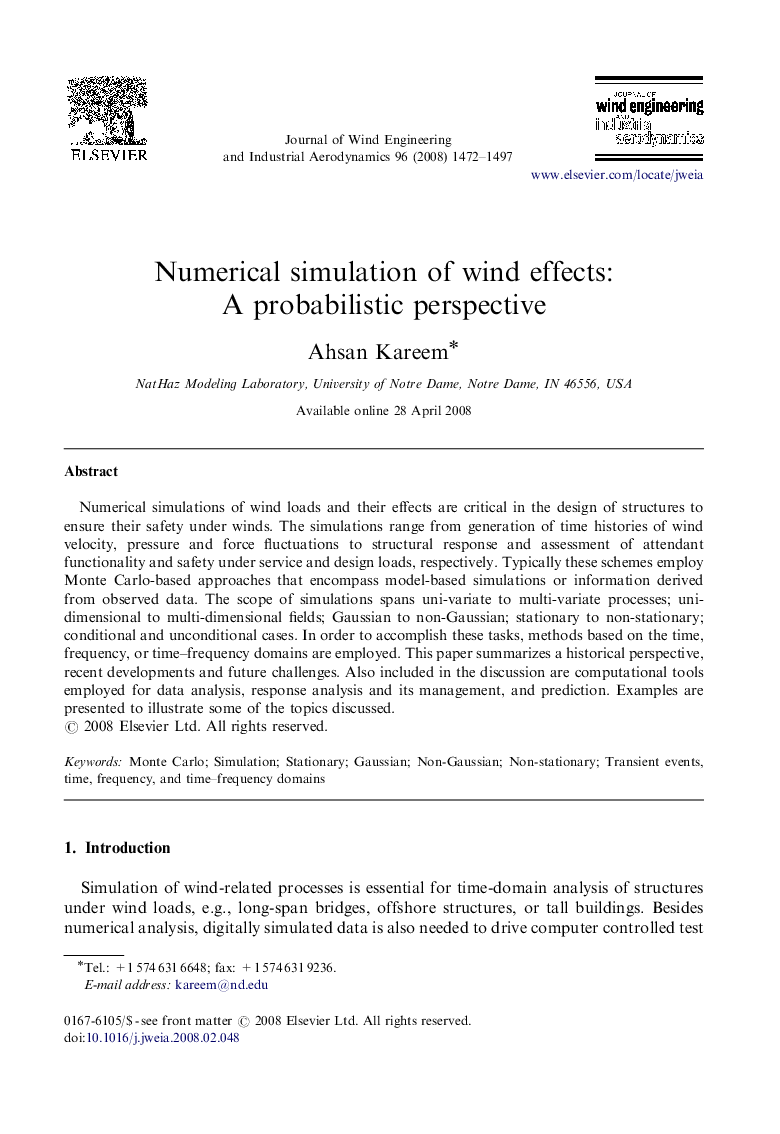| Article ID | Journal | Published Year | Pages | File Type |
|---|---|---|---|---|
| 293267 | Journal of Wind Engineering and Industrial Aerodynamics | 2008 | 26 Pages |
Numerical simulations of wind loads and their effects are critical in the design of structures to ensure their safety under winds. The simulations range from generation of time histories of wind velocity, pressure and force fluctuations to structural response and assessment of attendant functionality and safety under service and design loads, respectively. Typically these schemes employ Monte Carlo-based approaches that encompass model-based simulations or information derived from observed data. The scope of simulations spans uni-variate to multi-variate processes; uni-dimensional to multi-dimensional fields; Gaussian to non-Gaussian; stationary to non-stationary; conditional and unconditional cases. In order to accomplish these tasks, methods based on the time, frequency, or time–frequency domains are employed. This paper summarizes a historical perspective, recent developments and future challenges. Also included in the discussion are computational tools employed for data analysis, response analysis and its management, and prediction. Examples are presented to illustrate some of the topics discussed.
